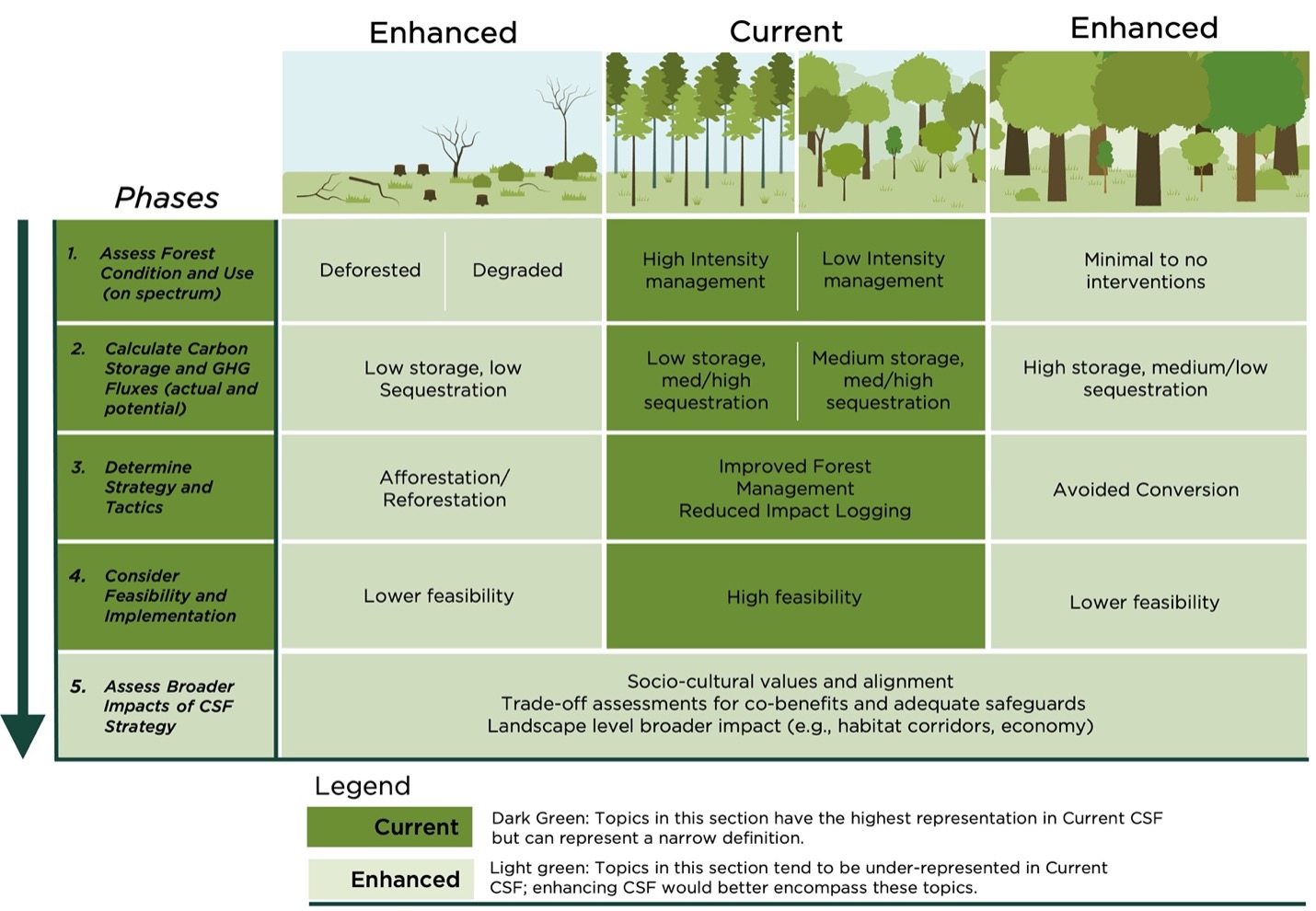Research from Michigan State University Forestry Department Offers an Enhanced Definition of Climate-Smart Forestry
Researchers from the Forestry Department at Michigan State University, Lauren Cooper and David MacFarlane, have published a new article with PLOS Climate offering an enhanced understanding of “Climate-Smart Forestry”.

Researchers from the Forestry Department at Michigan State University, Lauren Cooper and David MacFarlane, have published a new article with PLOS Climate. In their paper, Climate-Smart Forestry: Promise and risks for forests, society, and climate, Cooper and MacFarlane recognize the need for an expanded and shared understanding of the term “Climate-Smart Forestry”. This term has gained currency in dialogues on the role forests play in the global climate crisis. A clear and complete definition of Climate-Smart Forestry (CSF) is required for policymakers, natural resource managers, project managers, and others. To build this understanding, the authors have undertaken a literature review, qualitative assessment of practice and policy use, and a statistical analysis of datasets from related studies. With these data, they assess current definitions and framing of CSF, explore CSF gaps and potential risks, present a new definition of CSF to broaden intervention types and engage multiple scales of decision-makers, and explore sources of evidence of CSF.
Over the last few decades, forests have become an increasingly important focus of international investment, in efforts to promote change in global deforestation and degradation trends, and as a means to reduce and remove atmospheric greenhouse gases (GHG). Additionally, various regulatory and voluntary markets utilizing forest-based carbon credits have gained traction in recent years. However, tensions remain in discussions around utilization versus conservation, issues with carbon commodification, and the potential for carbon credits to become a form of greenwashing primarily benefiting those entities most responsible for excess GHG emissions. The use of CSF and related terms, such as “Climate-Smart Forest Economy” or “Climate-Smart Forest Products”, seems to rely on an assumption that CSF has been adequately defined and is well understood. This leads to the term being adopted and used colloquially, without critical examination and robust scientific rationale, constituting a “science-practice gap”.
The current understanding of CSF can be summarized as encompassing three overarching objectives:
- Increasing carbon storage in forests and wood products, in conjunction with the provisioning of other ecosystem services,
- Enhancing human health and community resilience through adaptive forest management, and
- Using wood resources sustainably to substitute for non-renewable, carbon-intensive materials.
To close gaps in theory and practice, Cooper and MacFarlane propose an enhanced definition CSF that includes two additional goals:
- Protect natural places by avoiding loss of forests, intact forests, forest complexity, biodiversity, connectivity, or conversion to higher management intensity;
- Promote restoration of degraded landscapes, improved ecosystem function, and connectivity (e.g., through corridors).
Further, the authors identify an emerging emphasis on forest carbon sequestration rates over carbon storage, indicating a narrow understanding of climate benefits. A focus on carbon sequestration does not fully consider the long-term resilience of forests, other treed landscapes, and the benefits of stored carbon on the landscape. They propose augmenting traditional forestry metrics by defining and promoting additional CSF indicators—such as tree longevity and biomass residency time—to be included in analysis, used to appraise multiple forest types more appropriately, adequately assess higher storage/lower productivity forests, and bring attention to protecting the large and secure carbon pools that are currently in place.
Cooper and MacFarlane also note that forest carbon projects commonly omit carbon pools and GHGs which are considered “not significant” or too difficult to assess, though some (such as forested peat soils) have the potential to be immensely important. They point out that including even default values for these kinds of carbon pools can provide important insights to support decision-making. Additionally, the authors assert that CSF claims around the carbon stored in harvested wood products must be based in data-driven calculations to avoid overestimating substitution benefits or underestimating emissions and fossil fuel use related to current forestry practices.
Finally, this research recognizes that industry, investors, and governments are the entities most likely to benefit from current understandings of CSF which do not fully incorporate traditional ecological knowledge. Roughly 1.5 billion Indigenous and rural peoples depend on forests for food and livelihoods, occupying approximately 28% of global land and nearly 20% of global forests, with either formal or informal tenure rights. Forests cover more than 80% of indigenous land area, totaling over 330 million hectares representing some of the most ecologically important, carbon rich biodiversity hotspots on the planet. Of these, 173 million hectares are considered “intact forests” meaning they have had little to no human modifications in the last 60–80 years. Recent decades have seen a greater focus on indigenous and rural rights in relation to conservation and climate mitigation, which can be leveraged to reduce risk of CSF oversight.
In this paper, Cooper and MacFarlane delineate the following gaps in and risks associated with the current framing of CSF:
- Overly simplified relationships between carbon sequestration and forest management,
- Emphasis on above-ground tree volume as forest carbon stocks,
- “Carbonization” of forest values,
- Unintended social effects and unequal benefit distribution,
- Misinterpreting climate effects, and
- Overlooking efficiency gains and economic misalignments.

As the authors illustrate in this figure, an enhanced conceptualization of CSF allows for a broad umbrella under which additional forested or potentially forested landscapes may be assessed, particularly those that may not be managed primarily for timber. Cooper and MacFarlane also propose an expansion of current planning and implementation phases to include assessment of the broader impacts of CSF strategy across socio-cultural values, trade-offs for co-benefits and safeguards, and landscape-level ecological and economic considerations.
This research underscores the value of considering a diversity of land management and conservation practices beyond carbon, that are essential to adapting to climate, actively consider other species, and support resilient landscapes that will continue to provide for the full spectrum of social and economic human need.
To read the full article please visit this link: https://doi.org/10.1371/journal.pclm.0000212



 Print
Print Email
Email